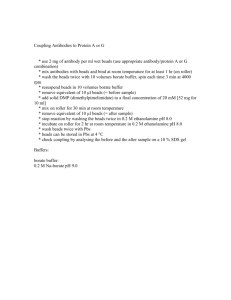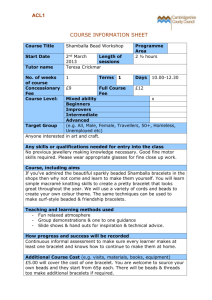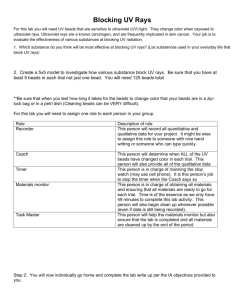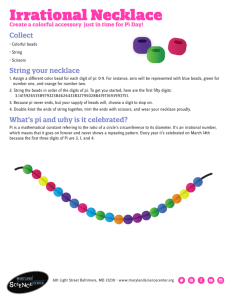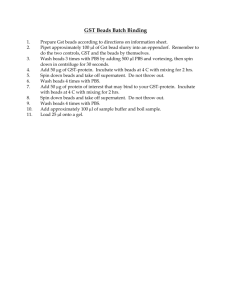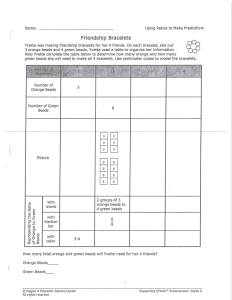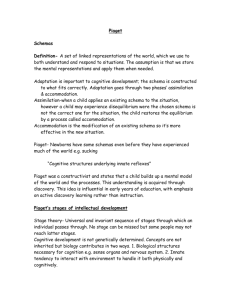Piaget concrete ops handout
advertisement
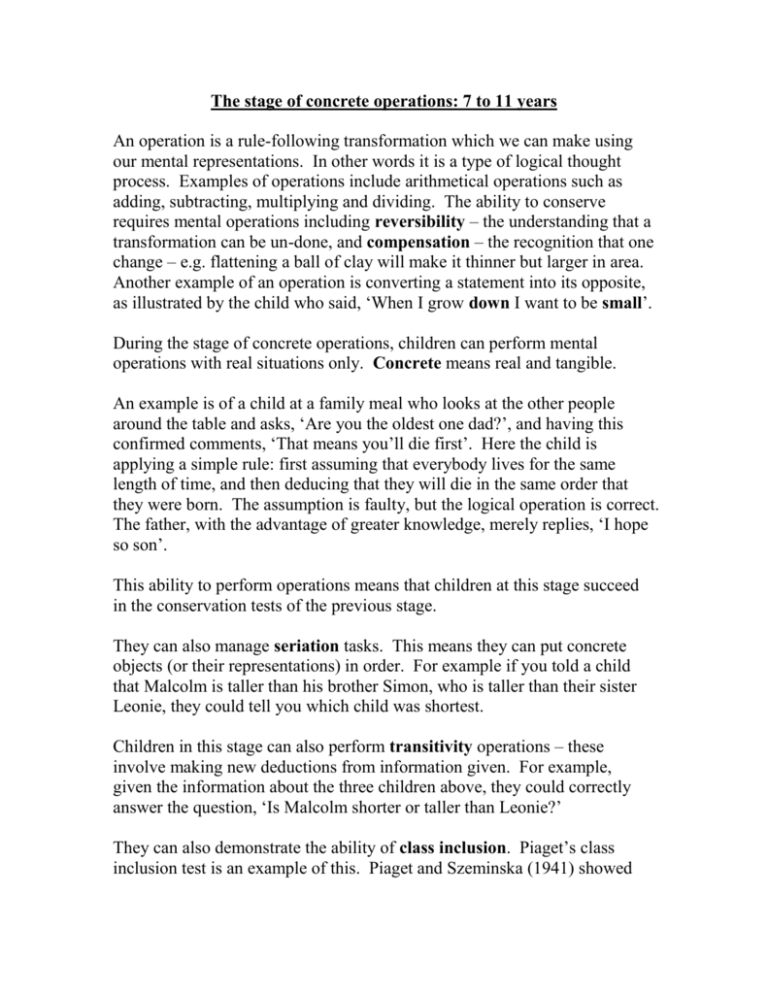
The stage of concrete operations: 7 to 11 years An operation is a rule-following transformation which we can make using our mental representations. In other words it is a type of logical thought process. Examples of operations include arithmetical operations such as adding, subtracting, multiplying and dividing. The ability to conserve requires mental operations including reversibility – the understanding that a transformation can be un-done, and compensation – the recognition that one change – e.g. flattening a ball of clay will make it thinner but larger in area. Another example of an operation is converting a statement into its opposite, as illustrated by the child who said, ‘When I grow down I want to be small’. During the stage of concrete operations, children can perform mental operations with real situations only. Concrete means real and tangible. An example is of a child at a family meal who looks at the other people around the table and asks, ‘Are you the oldest one dad?’, and having this confirmed comments, ‘That means you’ll die first’. Here the child is applying a simple rule: first assuming that everybody lives for the same length of time, and then deducing that they will die in the same order that they were born. The assumption is faulty, but the logical operation is correct. The father, with the advantage of greater knowledge, merely replies, ‘I hope so son’. This ability to perform operations means that children at this stage succeed in the conservation tests of the previous stage. They can also manage seriation tasks. This means they can put concrete objects (or their representations) in order. For example if you told a child that Malcolm is taller than his brother Simon, who is taller than their sister Leonie, they could tell you which child was shortest. Children in this stage can also perform transitivity operations – these involve making new deductions from information given. For example, given the information about the three children above, they could correctly answer the question, ‘Is Malcolm shorter or taller than Leonie?’ They can also demonstrate the ability of class inclusion. Piaget’s class inclusion test is an example of this. Piaget and Szeminska (1941) showed children twenty wooden beads. Eighteen were brown and two were white. Each child was asked several questions: 1. Are all the beads wooden? 2. Are there more brown beads or white beads? 3. Are there more brown beads or more wooden beads? Pre-operational children usually answer the first two questions correctly. However they usually answered question three by saying that there were more brown beads. Children in the stage of concrete operations usually answered all three questions correctly. Notice that in question two, the child has to think about two separate classes of beads – the brown ones and the white ones. But in question three, the two classes are not separate – they overlap. The class of brown beads is included in the class of wooden beads (this is class inclusion). The wrong answer is given, perhaps because the child assumes that if brown beads are one class, and they are the majority, they must have more members than any other possible class. The stage of formal operations: 11 years and beyond In this stage, adolescence can apply operations not only to concrete situations, but also to abstract concepts. One example of a formal operation is substitution used in algebra. The individual is able to use a symbol – such as ‘A’ to stand for an unknown variable. This enables them to perform other arithmetical operations on ‘A’. For example, if told that 3A=21, they can discover that A=7. During the stage of formal operations, adolescents can acquire and use abstract concepts. These are concepts which refer not to real objects or situations, but to inventive or hypothetical ones. For example, many psychological concepts are abstract. One example is the concept of conservation. Conservation is an idea used to make sense of how children perform and tests like the three beakers test. You cannot see or touch conservation – you can only infer that it is occurring when a child gives the right answer. Other abstract concepts include: repression, energy, bias, validity and justice. Adolescents also begin to think hypothetically. This means they can suggest what might be the result if something were to happen. For example, being able to say what might happen if all the polar ice melted. The stage of formal operations also features greater flexibility in thinking. For example, adolescents are able to try one way of solving a problem, and then if it is unsuccessful, they discard it and think of another way. They have a range of strategies instead of being limited to one approach. Piaget devised several tests of formal operational thought. One of the simplest was the ‘third eye problem’. Children were asked where they would put an extra eye, if they were able to have one, and why. Schaffer (1988) reported that when asked this question, 9 year olds all suggested that the third eye should be on the forehead. However, 11 year olds were more inventive, some suggesting that a third eye placed on the hand would be useful for seeing round corners. Another task Piaget used was to give participants some string and some weights which could be attached the string, and to use these to find out what factor or factors determine how fast the pendulum swings. Participants can vary the length of the pendulum string, and vary the weight. They can measure the pendulum speed by counting the number of swings per minute. To find the correct answer, the participant has to grasp the idea of the experimental method – that is to vary one variable at a time (e.g. trying different lengths with the same weight). A participant who tries different lengths with different weights is likely to end up with the wrong answer. Stage Characteristics Ability to deal with situations is limited to: 1. having sensations and Substages 1-3 producing actions (including reflex responses) Sensorimotor 2. the ‘here and now’ stage Intentional actions emerge Trial and error behaviour Substages 4-6 Object concepts develops Simple pretend play Language acquisition Symbolic thought develops Preconceptual Egocentrism period Animism Centration Preoperational Judgements based on stage appearance not logical Intuitive thought period Less egocentric Unable to conserve Can perform operations with real situations including: Stage of concrete operations Conservation Seriation Transitivity Class inclusion Can perform operations on unreal, abstract situations Stage of formal operations Abstract concepts acquired Hypothetical thinking Flexibility in thinking Typical Age 0-8 months 8-24 months 2-4 years 4-7 years 7-11 years 12+ years


